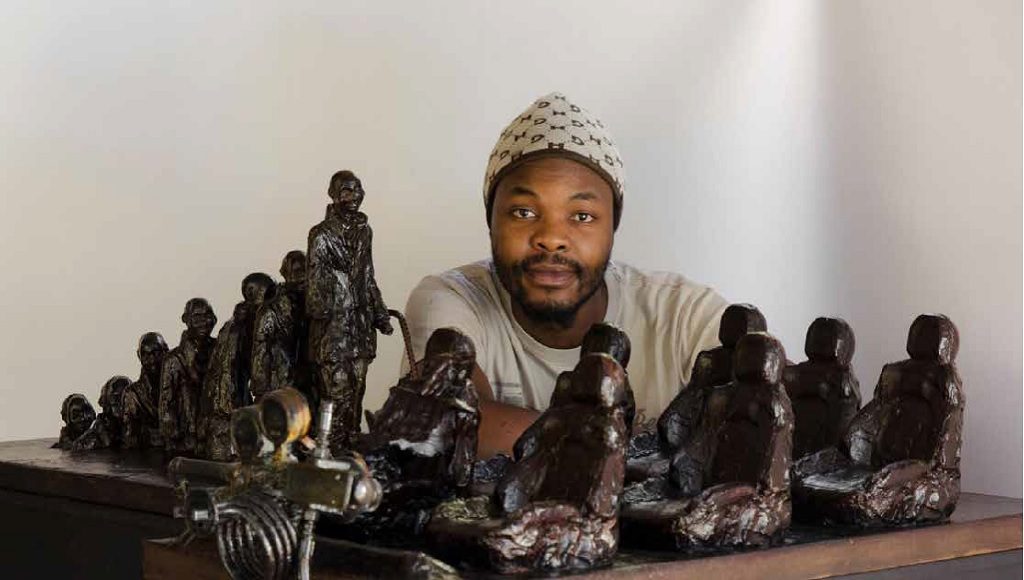Opening adress: Lwandiso Njara Exhibition

Lwandiso Njara – Afrofuturist – Engineering the New Jerusalem
I have had the privilege of being a marker of Lwandiso Njara’s graduate work at TUT, of showing on two person shows with him, opening various exhibitions of his work and I own a few works of his in my collection. So I was extremely honored to be asked to open his “Engineering the New Jerusalem” exhibition at FynArts Gallery in Hermanus last week. It was great to have a well sized crowd and to have Council members and local dignitaries in attendance. It was heartwarming too to have people listen intently, participate in the discussion and ask pertinent questions afterwards.
Njara has for many years developed a body of work, initially in sculpture and now in drawing, that investigates the hybridity of contemporary African people. This hybridity is based directly on his own life experience, growing up in a rural setting within his Xhosa tradition and at the same time being taught by Catholic Sisters at the Convent school. This is a common experience of many young African people and leads to potential clashes of ideology and cultural practices and forces the artist in this case to make art that attempts to engage with this phenomenon.
However, for Njara, there is a third aspect of hybridity to engage with, and that is the aspect of technology. I see his work as that of an Afrofuturist that is embracing the past and yet firmly on a trajectory to the future. He imagines the fusion of technology and the human body as well as aspects of the animal body into a hybrid of the future. Taking the strength and instinct of the animal, the thought capacity of the human and the technical qualities of technology and combining these in an almost cyborg way into this ‘new’ creature, the African of the future. He extends this idea into machines taking on animalistic qualities almost embodying the spirit of the animal. This is most pertinently seen in the series of high speed trains that grow horns and eventually morph in to high speed animal trains.
This morphing of animal and human in art and writing is not new and harks back to Greek and Roman mythology and to tales of ancient civilizations where animal and human characteristics are blended in order to tell a tale that has a moralistic tone. Njara’s work stems from this tradition but with a new twist. His body of work comes from this place of historical narrative but is personalized through his own life experience. This hybridity (which does not come from a place of darkness, evil or Satanism) is not without its own problems. Njara like so many people of his age bears the struggle of being both rural and urban and how at times each of these aspects is misunderstood by those around him. There is the City Lwandiso who struggles to fit into the Rural Lwandiso’s clothes when back in Transkie. And by contrast, the rural Lwandiso has to adapt his country ways when emerging in the city. This can lead to severe contradictions, criticisms by peers and family and a certain amount of self-doubt and struggle. His art is his way of trying to deal with the hybridity and yet look to a positive way of facing the future. This is where the mechanical and technological aspect come into play to engineer the New Jerusalem, a nod to the biblical future city that is the home of heaven on earth.
This brave, remarkable show that is beautifully rendered in charcoal and pencil brings the hybrid of an imagined future with reference to the 4th industrial revolution and the inherent past of the human and the animal into being as a positivist statement on where mankind and particularly Africa is going. Njara is no longer an emerging artist, but a well – established thinker that takes his rightful place in the South African artworld and will go on to be a thought leader on the future of Africans in a changing global environment.
For more information on Lwandiso – click here
Gordon Froud
Senior Lecturer
FADA
Visula Art Department
University of Johannesburg
